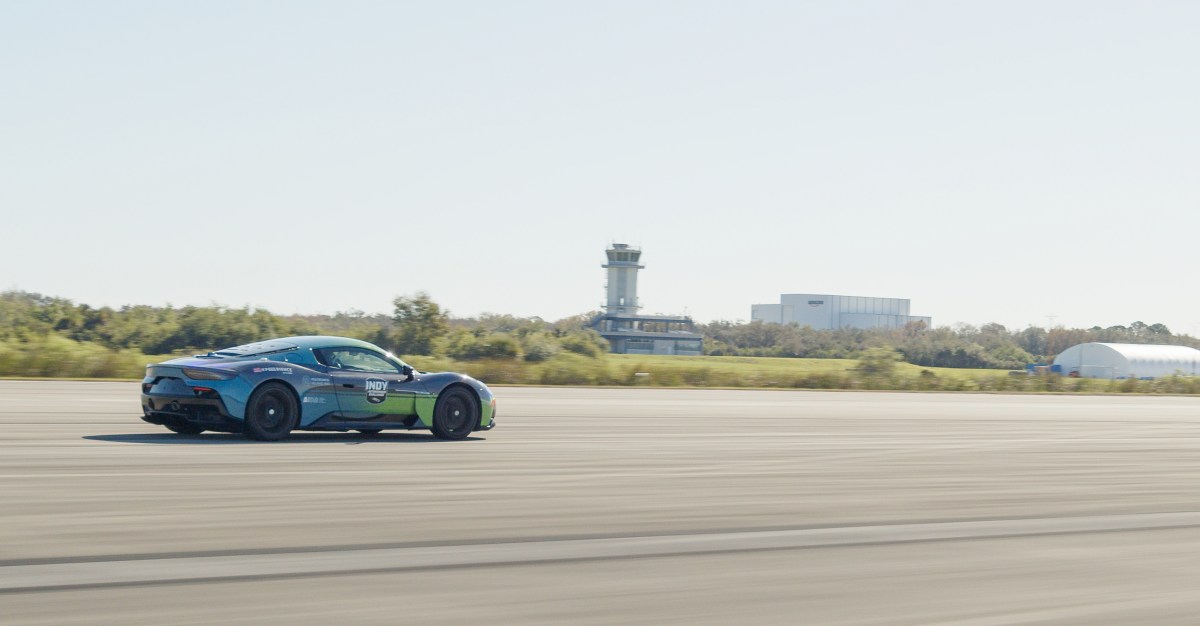Racing into the Future: The Record-Breaking Speed of Driverless Cars
In an exhilarating leap forward, a driverless racecar has recently shattered previous autonomous speed records, demonstrating the incredible advancements in technology. This groundbreaking achievement not only emphasizes the potential of automation in motorsports but also raises intriguing questions about the future of driving itself. As we explore this remarkable milestone, we’ll delve into the implications for the automotive industry, safety, and the overall driving experience.
The Rise of Autonomous Racing
The concept of driverless racing isn’t entirely new; however, it has gained significant traction in recent years. Various organizations have emerged, dedicated to pushing the limits of autonomous vehicle technology. One notable event is the Roborace series, where teams compete using fully autonomous electric vehicles. With the recent record-breaking achievements, the spotlight is now on how these innovations can reshape the motorsports landscape.
At the heart of this transformation is the integration of advanced algorithms, artificial intelligence, and cutting-edge sensor technology that enables vehicles to navigate complex tracks at astonishing speeds. The latest record set by a driverless racecar—clocking in at over 200 mph—marks a pivotal moment, showcasing not only speed but the potential for precision and safety in autonomous driving.
Technological Marvels Behind the Speed
So, what makes these driverless cars capable of achieving such incredible speeds? The answer lies in a combination of sophisticated technologies:
- Artificial Intelligence (AI): AI systems enable the car to analyze vast amounts of data in real-time, making split-second decisions that are crucial during high-speed racing.
- LiDAR and Radar Sensors: These sensors provide a 360-degree view of the environment, allowing the car to detect obstacles, track competitors, and navigate curves with precision.
- High-Performance Computing: Powerful onboard computers process data from sensors and execute complex algorithms to optimize performance and safety.
This technological synergy not only allows these vehicles to reach unprecedented speeds but also enhances their ability to react to dynamic racing conditions. The car can adjust its trajectory and speed based on real-time analysis, often outpacing human drivers in terms of reaction time and decision-making.
Implications for the Future of Driving
The record-breaking speed of driverless cars raises compelling questions about the future of driving and transportation as a whole. Here are some key implications:
- Enhanced Safety: With AI and advanced sensors, driverless cars can potentially reduce accidents caused by human error. This could lead to safer roads and fewer fatalities.
- Rethinking Mobility: As driverless technology becomes mainstream, the necessity for personal car ownership may decline. Ride-sharing and autonomous public transport could become the norm.
- Environmental Impact: Electric driverless cars have the potential to lower carbon emissions, especially when integrated with renewable energy sources, contributing to a more sustainable future.
Challenges Ahead
While the advancements in driverless car technology are exciting, several challenges remain:
- Regulatory Hurdles: Governments worldwide are still grappling with how to regulate autonomous vehicles. Comprehensive legislation is needed to ensure safety and accountability.
- Public Acceptance: Many individuals are still hesitant about relinquishing control to machines. Building trust in driverless technology is crucial for widespread adoption.
- Technological Limitations: Although progress is rapid, there are still scenarios where driverless cars may struggle, such as inclement weather or unpredictable road conditions.
The Role of Motorsports in Advancing Technology
Motorsports have always been a testing ground for automotive innovations, and the rise of driverless racing is no exception. The challenges posed in a racing environment accelerate the development of new technologies that can later be applied to consumer vehicles. As teams push the boundaries of speed and performance in controlled conditions, they gather invaluable data that can enhance the safety and efficiency of everyday driving.
Furthermore, the competition between teams in autonomous racing fosters a spirit of innovation. Companies are motivated to invest in research and development, leading to breakthroughs that may have far-reaching implications beyond the racetrack.
Conclusion: Embracing the Future of Autonomous Vehicles
The record-breaking speed of driverless cars marks an exciting chapter in the evolution of automotive technology. As we race into the future, the implications of these advancements are profound, offering a glimpse into a world where automation transforms not only how we race but how we drive in our daily lives.
From enhanced safety and sustainability to the reimagining of mobility, the potential benefits of driverless technology are vast. However, it’s essential to address the challenges that come with it, ensuring that the transition to an automated future is smooth and beneficial for all. As we witness these technological marvels on the racetrack, we can only imagine the possibilities that await us on our roads.
In the end, the journey toward a future dominated by driverless cars is one worth watching, promising not just faster vehicles, but a safer, more efficient, and exciting world of transportation. The race has just begun.
See more Future Tech Daily

